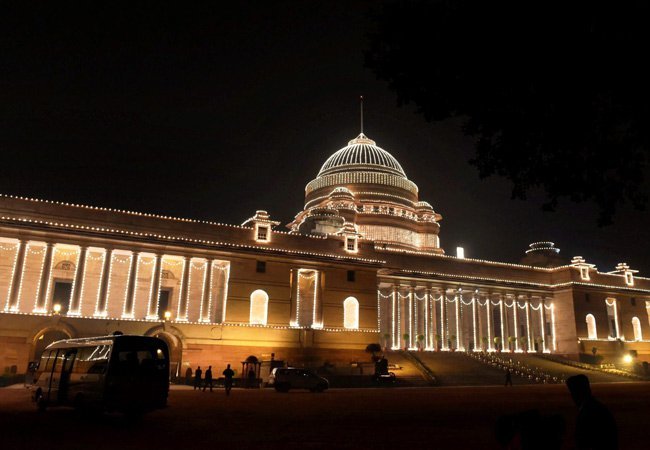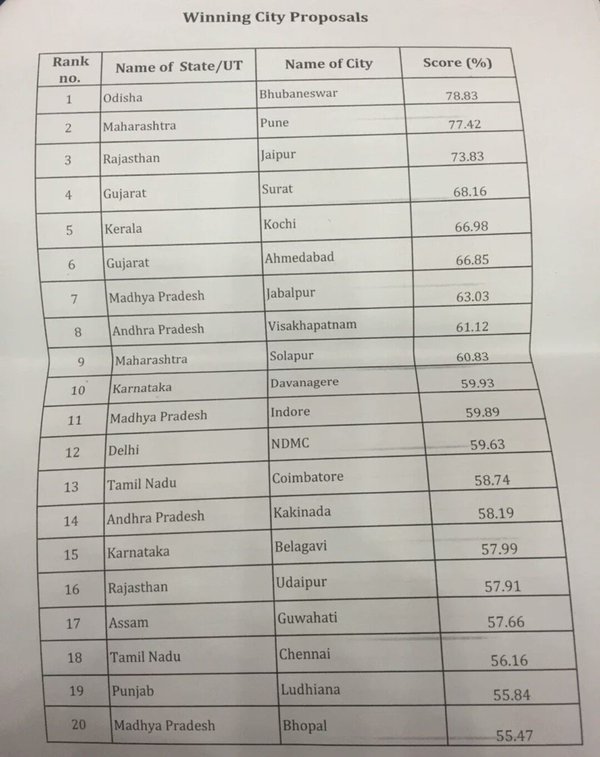Hours after the unveiling of India’s 20 first to-be smart cities list in New Delhi on Thursday, it was not late since the reactions from dissatisfied politicians started pouring in, with opposition Congress claiming how the BJP central government sidelined cities of the states ruled by its opponents.
However, there was not only a political reaction to it.
The inclusion of New Delhi Municipal Council (NDMC) area better known as Lutyens’ Delhi for its VIP residences and British era administrative setup caused bewilderment among many – just for the obvious reason of logic behind the idea of turning an already-grand area into a smart city.
Sample this
Delhi wasn’t smart so far? https://t.co/w3bDuOpH0O
— Anurag Kotoky (@anuragkotoky) January 28, 2016Davanagere and Belagaavi in Smart Cities list. Very good stuff. But no clue what Chennai and Delhi are doing in that list
— karthik (@karthiks) January 28, 2016To set the record straight, a mere 1.5-3% (mostly high-profile babus and India’s elite club) of the Delhi’s 17 million population lives in the area, earmarked for smart city mission. The 43 sq km chunk of capital’s area selected for the project forms just a 3 percent of Delhi’s total area.
What this means is: most of the Delhites will never know, leave experience, what it means to live in a smart city.
Perhaps that might act as a justification for Aam Aadmi Party’s criticism of asking BJP why it left behind Delhi slums, villages and middle-class areas outside the purview of PM Modi’s Smart Cities Mission.
But the area of concern lies somewhere else. If the political dimension of the decision is subtracted from the selection process, a cursory view of the government’s selection process and mechanism underlined to select a smart city might prove some answers.
Here’s how
The selection process put down by the government clearly merits a proposed city’s record on various fronts like functioning of public institutions, budgetary plans and their implementation, transparency and accountability over a period of time. What vision a city has in mind for its future also proved an addition to the scores of each city.
In its directive to the state governments during the initial days of mission, the central government had clearly asked them to put forward only those cities or areas which have exemplary record in terms of development and urban planning. Such directives made the Smart city mission an intra-state race and not a policy of equitable development.

Being the fountainhead from where India’s power structure flows – Lutyens’ garnered an excellent score.
Nevertheless, Delhi’s three municipal corporations, which houses most of the Delhi’s population, was ranked one of the dirtiest in the country according to a study conducted by Ministry of Urban Development in 2015. The two stark reminders were open defecation and lack of solid waste management.

If the supporters of inclusion of Lutyens’ area, however small, in the list need an assistance to make their point, the government’s own plan document for Smart Cities Mission provides it, pretty succinctly.
“The focus is on sustainable and inclusive development and the idea is to look at compact areas, create a replicable model which will act like a light house to other aspiring cities.”
In other words, 97 percent Delhi citizens will have to look towards Lutyens’ to aspire that they also build one, if ever.
Experts don’t find it hard to guess which way the urban/rural and poor/rich divide will move.
According to a report in Hindustan Times, Urban development ministry officials want to transform the area into the “world’s benchmark capital city.”
As of now, it’s not clear whether that idea will ever reach outside the beautifully trimmed laws on Lutyens.

















